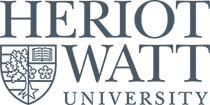CfS Afternoon on Risk, Noise, and Extremes
CfS Afternoon on Risk, Noise, and Extremes
The Centre for Statistics and the Maxwell Institute for Mathematical Sciences welcome world experts on risk, noise, and extreme events. The event aimed to provide an overview to non-experts on these intra-disciplinary and fast-evolving fields. World experts Jonathan Rougier (Rougier Consulting Ltd.), Georg Lindgren (Prof. Em., Lund University) and Jonathan Tawn (Prof. Lancaster University) will introduce topics on mathematical and statistical modelling of rare but catastrophic events, such as floods, earthquakes, and tsunamis.
This event was organised in collaboration with the Maxwell Institute for Mathematical Sciences and Heriot Watt University.
Program
- 12:20-13:10 Lunch (Room 5.03, Bayes Centre 5th floor).
- 13:10-14:00 Jonathan Rougier, Rougier Consulting Ltd.
- 14:20-15:10 Georg Lindgren, Lund University.
- 15:30-16:20 Jonathan Tawn, Lancaster University.
All talks in G.03 (Bayes Centre ground floor). There will be a 20 minute coffee break between each talk outside G.03.
Global screening for volcanic risk†Jonathan Rougier, Rougier Consulting Ltd
Abstract: The World Bank has identified parametric (or 'index') insurance as an underused tool for managing risk and reducing poverty. In outline, such an insurance contract might read 'pays $100M the first time a large explosive eruption occurs at an Indonesian volcano in the next year'. The challenge is to calculate the fair price of such a contract. This is one example of the type of problem I consider: given a catalogue of events from cases that are similar but not identical, compute the probability distribution of the number of events of a specified subset, over a specified future time-period. Technically, this appears to be a difficult calculation, given that it involves a convolution over non-identical and non-independent random variables. However, a carefully chosen set of modelling choices makes this a computationally tractable problem that scales well to thousands or millions of cases. This means it can be used for volcanic risk screening (hundreds of cases), and also in many instances of everyday insurance, such as car accidents (millions of cases).
Steve O. Rice (1907–1986)—useful noise inspires statistics research
†Georg Lindgren, Lund University
Abstract: In 1944 and 1945, S. O. Rice published a monumental study of noise, generally regarded to be the single most useful source of information about Gaussian noise.” These strong words (from the history of research at Bell Telephone System) illustrate how abstract theoretical concepts, like Gaussian processes, correlation function and power spectrum, became common goods in one, very specialized, field of engineering, communication theory. The title of the papers was "Mathematical analysis of random noise".
Many engineering communities quickly applied Rice’s stochastic approach in previously deterministic fields, and control, mechanical, and ocean engineering formulated their own versions, based on Rice’s treaties. One spectacular shift in paradigm took place in ocean engineering, which built advanced stochastic models for the ocean surface already in the early fifties, negating the quote by Lord Rayleigh:
The statistics community was slow to appreciate the many challenges that lay open in Rice’s two articles, but around 1960 theoretical studies on level crossings and extremes started to appear in core statistical journals and conference proceedings. The book "Stationary and related stochastic processes", by Harald Cramér and Ross Leadbetter (1967), set the style for much of theoretical research. It also gave a firm basis for the coming development of statistical extreme value theory and its applications.
Steve Rice is regarded as a giant in communication theory. He deserves a similar place as a door opener for the statistics community to a rich field of modern important problems, risk and reliability, environmental research, transportation, and other fields.
‡Prof. Lindgren will also present a Statistics seminar at the Bayes Centre, room 5.10, on Friday 1 November, 15:05-16:05, on applications of Rice's formula in oceanography. See https://talks.is.ed.ac.uk/talk/1894/show for details.
Modelling spatial extreme events
†Jonathan Tawn, Lancaster University

Abstract: When assessing the risk posed by environmental processes it is necessary to consider not only the extreme values of the process at separate sites but also the spatial extent of the extreme values in the same event. This spatial information is vital for assessing losses for the insurance industry from flooding or for determining the risk of heatwaves. Clearly events that have a more localized spatial extent to the extreme values will tend to have less severe impacts; so efficient estimation of the spatial behavior of the process is essential for risk assessment.
Extreme value theory provides a very flexible class of asymptotically justified probability distributions to describe the behaviour of the extreme values. In the univariate case the well-established class of distributions fully described by a 3 parameter class of models. This parsimony and flexibly provides a strong basis for modelling. In multivariate and spatial extremes the dependence structure also has critical structure imposed on it by focusing on extreme events. The nature of the structure imposed though depends on the form of the asymptotic argument used and in no case is it fully parameterized.
For spatial modelling of extreme values one asymptotic approach has led to the class of max-stable processes being widely used. A major weakness of these max-stable models is that the spatial profile of events is independent of their peak magnitude. However, for many processes (such as all Gaussian processes) the extreme events becoming increasingly localized as the magnitude of the events become more extreme. In this talk I will introduce spatial extreme value processes that allow for both these of types of spatial extreme process. The properties of these models will be illustrated with applications to the risk assessment for river-flows, heatwaves and offshore waves.


Partners: In partnership with the FCT (Fundação para a Ciência e a Tecnologia) research project PTDC/MAT-STA/28649/2017.

